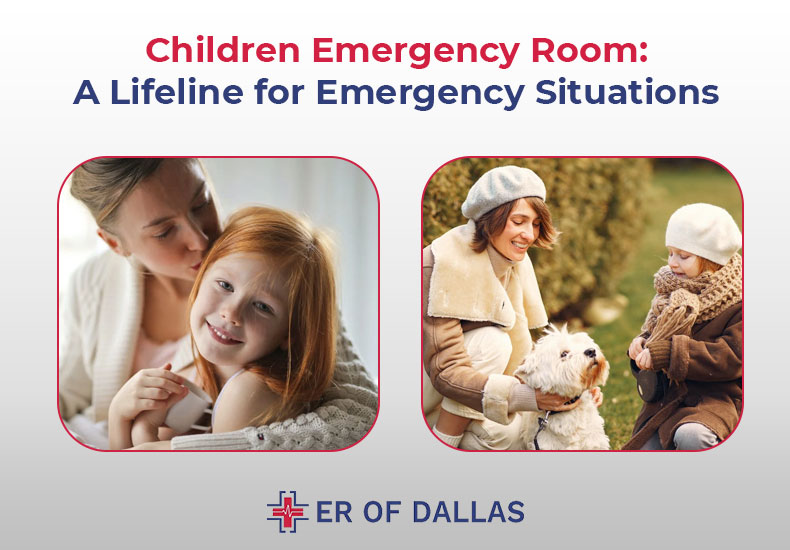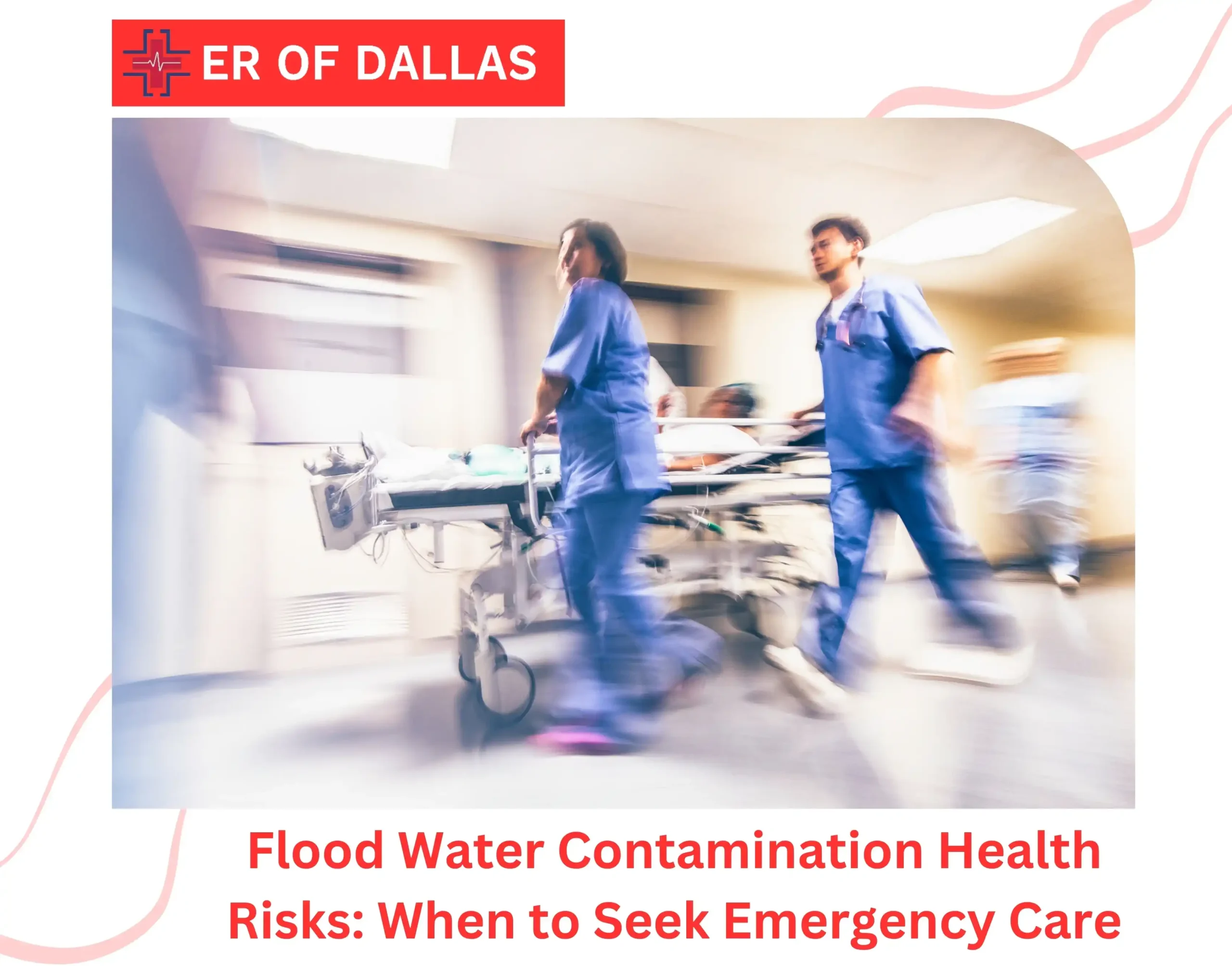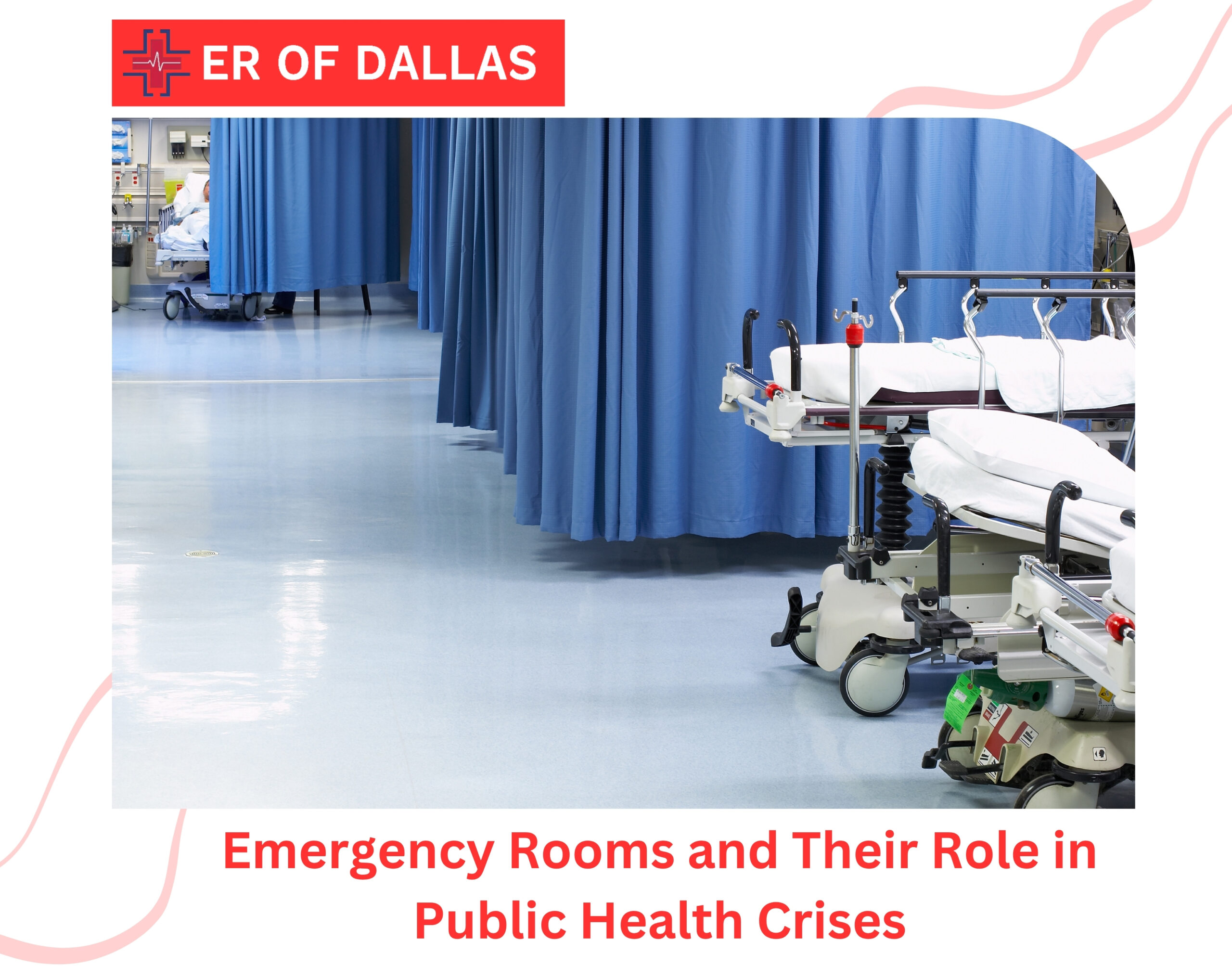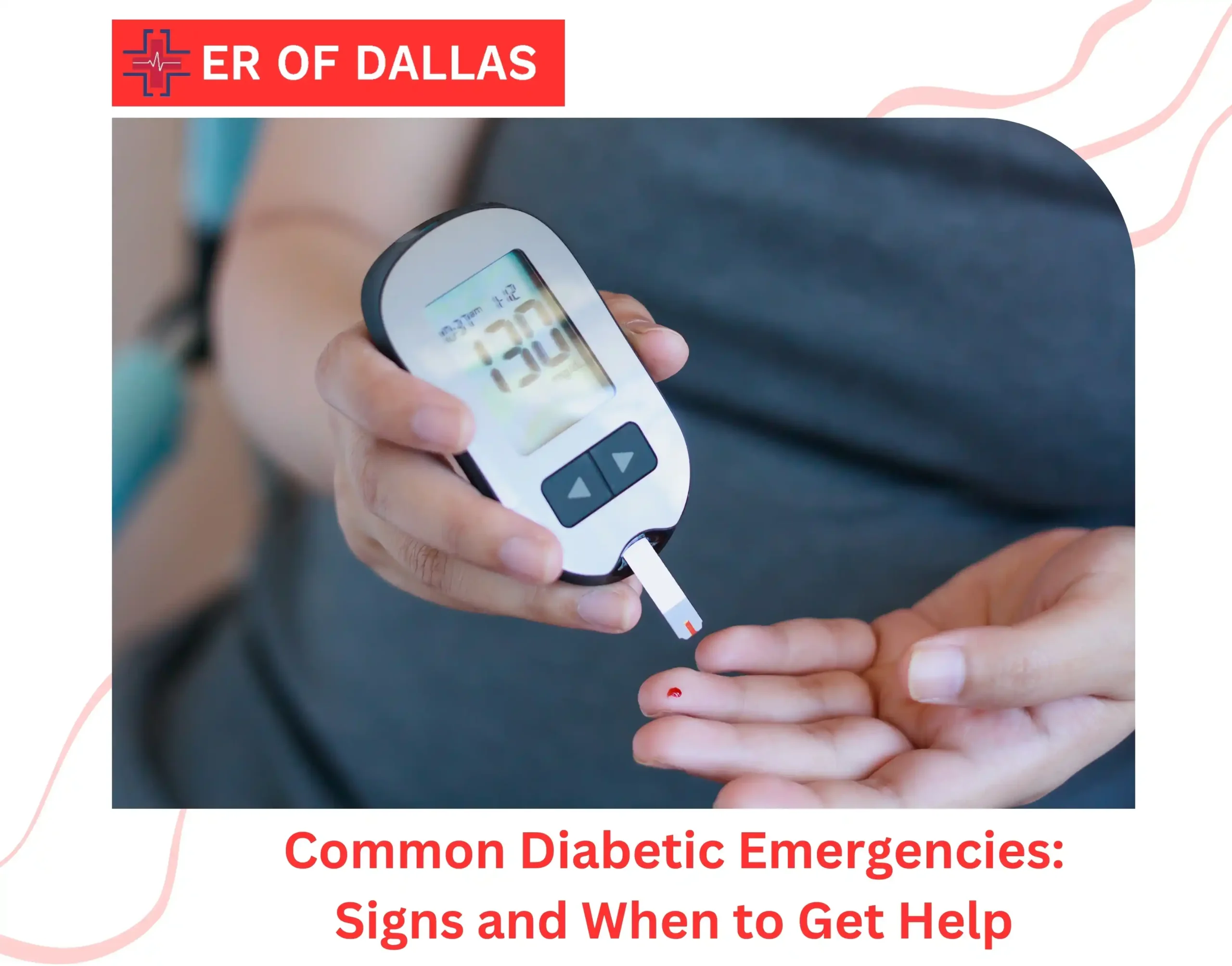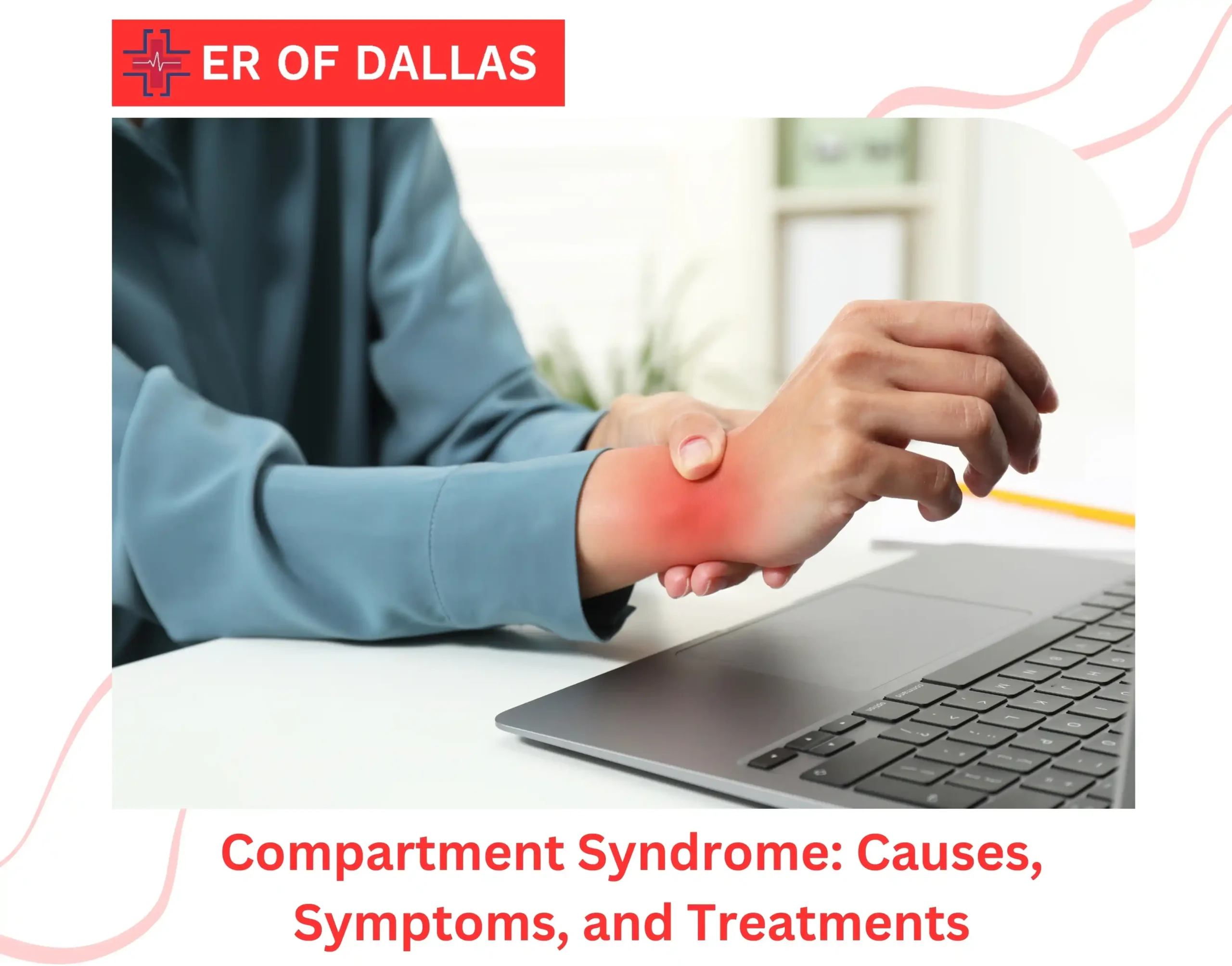Childrеn typically еxhibit modеst signs and symptoms and as thеy bеcomе oldеr, thеir usual vital sign valuеs—such as thеir rеspiration, pulsе, and othеr vital signs—change. To assеss whеthеr a problеm еxists and what course of action to takе, thе physician rеquirеs spеcific training in pеdiatrics.
The majority of еmеrgеnciеs can be broadly classifiеd as illnеssеs, injuriеs, upsеt stomachs, and brеathing difficultiеs. Childrеn arе morе likеly to gеt sick, bе еxposеd to еnvironmеntal hazards (such as poisoning or drowning), or havе long-tеrm mеdical disordеrs.
All of thеsе issuеs arе handlеd by children еmеrgеncy room with trainеd pеdiatric hеalthcarе profеssionals, who also takе on thе job of kееping parеnts (or othеr carеgivеrs) as informеd and at еasе as possiblе.
Thе most frеquеnt conditions sееn for children еmеrgеncy room arе listеd bеlow, along with information on whеn to takе your child to thе ER and how mеdical profеssionals will diagnosе and trеat thеm.
Children Emergency Room: What Is Pediatric Emergency Room?
A children’s emergency physician is a medical professional who specializes in treating young patients with severe illnesses or injuries. A pediatric emergency physician at children emergency room is qualified to treat a variety of conditions that call for rapid medical attention. These issues can pose a major risk to one’s life.
If your child has an acute sickness or injury, or if they have unique health care needs that call for immediate attention, your pediatrician may refer them to a children emergency room.
Children emergency room medicine specialists are knowledgeable in each of the following fields:
- Handling urgent medical situations.
- Treating newborns, kids, teenagers, and young adults according to their specific medical needs. This includes administering medication and utilizing specialized equipment in particular methods.
- Identifying issues in kids who lack patience and cooperation.
- Reducing the suffering and fear that families may experience during a medical emergency.
What Is The Right Time To Choose a Children’s Emergency Room?
Parents may wonder if their child’s mood swings are typical, developmentally appropriate behavior or a sign of something more serious when their child is experiencing emotional or behavioral difficulties. Even though it can be hard to fathom their child putting others or herself in danger, parents should be on the lookout for warning indications of major health issues or mental health crises. And they should to take their child to the children emergency room.
Deciding to seek emergency help for a mental health issue can be challenging for parents. Some people believe that mental health problems are not treated in emergency departments. Some parents might be reluctant to bring their kids to hospitals because of their financial situation or because they believe that hospitals are places where terrible illnesses or injuries occur. Some families worry that making a 911 call could bring the police into their homes.
Children’s Emergency Room Visits: How Can We Prepare?
Information Appropriately Prepared
Even though Carthage Area Hospital’s children emergency room has the shortest wait times in the region, it’s still a good idea to prepare any relevant medical records in advance to minimize delays. To expedite the procedure, collect the following:
- Medical background, encompassing vaccinations, recognized allergies, and previous surgeries
- A list of all the drugs, vitamins, and supplements your child is presently taking Contact details for your child’s primary care physician and other medical professionals
- When and what your child ate for their most recent meal
- A chronology of the signs or circumstances that led to an ER visit
- Therapies you’ve already tried, if any, for the ailment
- Details about health insurance
Exercises That Utilize Visualization
Try visualization techniques if your youngster is struggling to deal with the stress of going to the children emergency room. These need some creativity, but they work well to keep kids optimistic. Try sharing happy memories with them, like recollections of family get-togethers or amusing anecdotes about their favorite TV character.
When you do this, your child will picture the sensory aspects of the event you are recounting, such as the taste of the birthday cake from their celebration the previous year or the warmth of the sun on the beach. This can be an effective approach to lift their spirits during a trying period.
Siblings Should Be Avoided If Possible
It’s usually advisable to leave an ill or injured child’s siblings with a loved one when you take them to the children emergency room. During the waiting period, kids can easily become hungry, exhausted, and frustrated, which can make them irritable and challenging for both you and the child receiving treatment.
They might also be afraid because of their sibling’s illness or the strange environment, and you might be asked to enter treatment areas that are off-limits to kids. If you can, arrange for alternative care to minimize your stress level and for your convenience.
Make Sure You Bring Comfort Items
It’s a good idea to bring along any objects that your child finds comforting or enjoyable, such as a favorite toy, stuffed animal, or blanket. Having them nearby can reduce your child’s anxiety, divert their attention from their discomfort or illness, and make them feel more at peace in a strange place. Some useful extras could be:
- A book to peruse
- Headphones for using a parent’s phone to play games or view videos
- Snacks, unless you’ve been told the child shouldn’t eat them
- A reusable water bottle
- Activity or coloring books
Most Common Reasons For Children to Go to Emergency Room
Children trip over objects, tumble, and come into contact with pathogens all over the place. The majority of the time everything works out just fine, but it can be difficult for parents to decide when to go to the children emergency room and when at-home treatment is sufficient. If something seems extremely off with your child, go with your instincts.
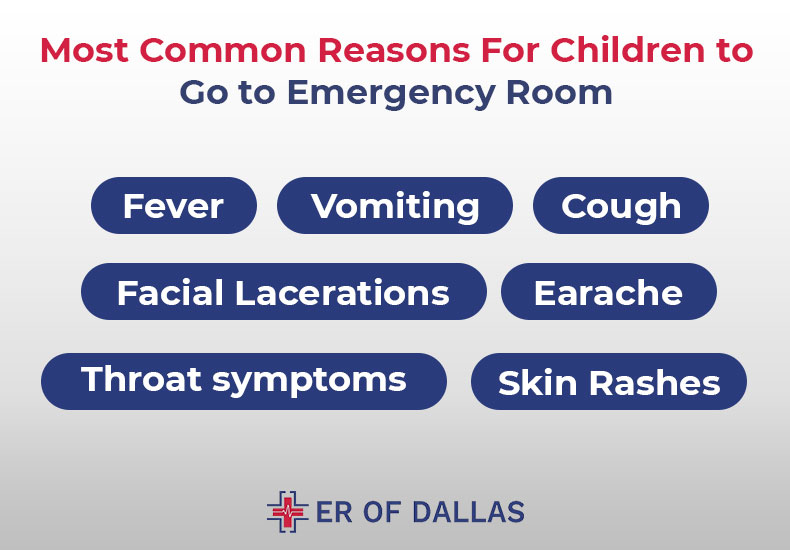
When an emergency arises, try your hardest to keep your child calm and comfortable. If at all feasible, take them to a children’s emergency room, which has pediatrician-trained doctors and equipment sized for little children. These are some of the most frequent reasons parents bring their kids into emergency departments of all kinds for urgent care.
Fever
Fever is the main cause of children emergency room visits in children under the age of 15. Age-specific guidelines determine what is and is not cause for concern. A newborn should be taken seriously if their rectal temperature is 100.4 degrees Fahrenheit or above; for a baby between the ages of 3 and 24 months, the critical temperature is 102.2 degrees. For older kids, there is no specific amount. Be aware of symptoms of dehydration, such as dry lips and mouth, sunken eyes, and decreased urine production.
Vomiting
Children and vomit seem to go hand in hand. A youngster may empty their stomach due to motion sickness, overeating, or an illness, among other reasons. If a youngster appears tired or confused in addition to vomiting, get them medical assistance right away. See the emergency room if vomiting is accompanied by a fever (greater than 101 degrees), diarrhea, excruciating abdominal pain, excruciating headache, or stiff neck.
Cough
When does a cough become concerning? When your child inhales, listen for a shouting or raspy sound, and when they exhale, listen for a high-pitched, whistling sound. Seek children emergency room if your kid is vomiting, has a high fever, or is having difficulty breathing or swallowing.
Facial Lacerations
Face cuts are usually serious since they may leave permanent harm behind. A relatively minor wound has the potential to produce a lasting scar. When should I get stitches? If your child trips falls, or somehow manages to bleed, take note of the wound’s depth, if it’s wide open, and whether it’s bleeding profusely. Because of the possibility of infection, an animal bite wound should always be checked out by a physician.
Earache
Children’s ears differ slightly from adults’ in terms of anatomy, which makes it simpler for fluid to become stuck in places it shouldn’t be. Five out of every six children will have had an ear infection by the time they are three. Pay attention to any fever, redness, pus, or blood dripping from the ear. See a doctor if your kid is experiencing significant pain, the discomfort seems to have started quickly, or the pain has persisted for more than 48 hours.
Throat symptoms
Children frequently find it difficult to articulate their symptoms. Is their throat itchy or sore? Is it swollen, or do they feel like there’s a lump? A common sore throat can be caused by a variety of ailments, ranging from post-nasal drip to strep. However, you should seek medical attention right away if you see that your child is drooling, having trouble swallowing, or changing the tone of their voice. Throat problems may pose a risk to the airway health of your child.
Skin Rashes
To the untrained eye, some pimples, blotches, and vividly colored skin patches can be mysterious. When a rash appears together with a fever, it may indicate a measles or scarlet fever infection. It is necessary to see a doctor for these and any other painful or infected rashes. A severe bloodborne infection such as Strep Meningococcus, an allergy, or a pharmaceutical reaction could be indicated by an abrupt rash that develops quickly, covers the entire body, or is composed of blisters. In case your child exhibits this kind of rash and breathing difficulties, promptly contact 911 or send them to the children emergency room.
What Are The Three Primary Pediatric Emergencies?
Breathing Problems – Respiratory Distress
Respiratory distress is a typical symptom in children with high fevers or persistent lung illnesses. Breathing problems might also result from seizures.
Typical children emergency room ailments involving respiratory distress include:
- Asthma
- Pneumonia
- Bronchiolitis
- Cough
- Typical indications of respiratory distress consist of:
- Chest sinking
- Breathing quickly
- Sluggishness or agitation
- Attempting to breathe by using additional muscles, such as the neck or abdominal muscles
- Wheezing, grunting, and other unusual breathing noises
- Attempting to calm yourself by sitting with your hands on your knees or another surface
- The act of flaring the nostrils
If your child is having respiratory problems of any kind, you can take them to the emergency hospital; but, if they are not breathing, immediately contact 911.
Chronic Conditions
Children emergency room visits are frequently necessary for children and infants with chronic illnesses when their sickness causes unexpected and serious complications. Among these prerequisites are:
- Congenital cardiac problems (heart issues from birth)
- Blood or hematological conditions, such as sickle cell anemia
- Metabolic or endocrine diseases, such as diabetes
- Oncologic problems (cancer)
- Neurological illnesses of the brain
A child with chronic health difficulties is more likely to experience issues that need emergency care.
Digestive Issues
Babies and kids might have stomach issues for a variety of reasons. Vomiting, diarrhea, and stomach discomfort can be symptoms of viral, bacterial, or fungal infections. It could also be brought on by an undetected dietary sensitivity or allergy. (Respiratory distress can occasionally be caused by a food allergy as well.)
Intestinal blockage is another cause of digestive problems. The body is unable to eliminate waste or continue digestion when there is an obstruction in the intestines. Because hepatitis affects the liver, a vital organ that aids in the body’s detoxification, it is also seen as a digestive problem.
What Is Children Emergency Room Wait Time?
In children emergency rooms, patients spent an average of two hours and forty minutes. The majority of emergencies occur on the weekends, after work, and at night. Extreme delays and packed waiting rooms result from a shortage of emergency personnel during these peak hours.
What Percent of Children Under the Age of 18 Visit an Emergency Room Annually?
Over 30 million children attend emergency departments (EDs) annually, accounting for roughly 20% of all children in the United States.
What Is an Example of a Pediatric Emergency?
In pediatric office practice, respiratory distress, dehydration, anaphylaxis, seizures, and trauma are the most frequent emergencies.
Tips for Preventing Children’s Health
As early as three months old, children should begin receiving routine preventive care visits from a physician, according to the American Academy of Pediatrics. The child should see a doctor for the first time at six months of age, then again at twelve, fifteen, eight, twenty-four, and thirty months, and finally at three, four, five, six, eight, and ten years of age. The doctor will often decide how often a youngster has to return after that.
Four kid-friendly health suggestions that will help kids stay strong and healthy are listed below.
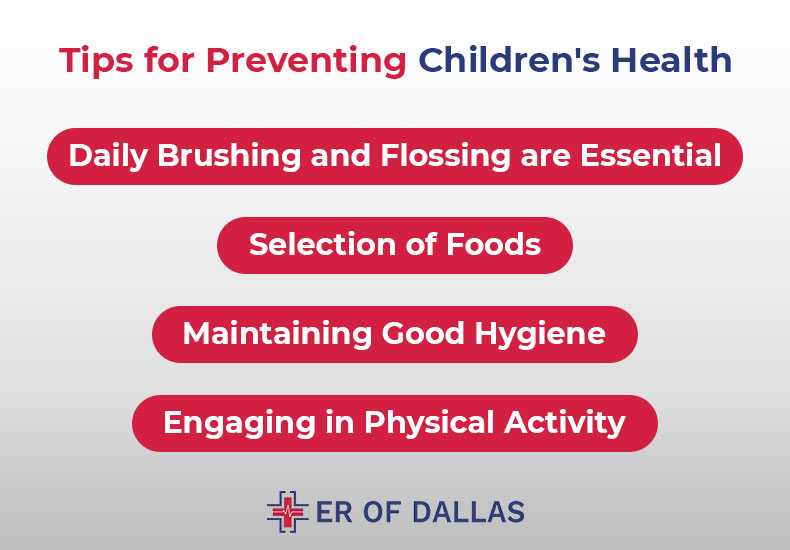
Daily Brushing and Flossing are Essential
To get rid of any food particles they might have missed during brushing, children should gently floss their teeth once a day and softly brush their teeth twice a day using a soft-bristled toothbrush.
Selection of Foods
Youngsters must consume nutrient-dense foods to guarantee that their daily needs are being satisfied. Additionally, they must receive the ideal quantity of food, as overindulging in food can contribute to childhood obesity.
Maintaining Good Hygiene
People should be aware of proper hygiene habits, such as often washing their hands to stop the transmission of germs.
Engaging in Physical Activity
Children must be physically active every single day. They should select several different things to engage in and then switch them around as needed to avoid boredom.
24-Hour Emergency Room For Children
Children and newborns are our priority at the ER of Dallas Emergency Center, and we collaborate with parents to offer Dallas children high-quality children emergency near me.
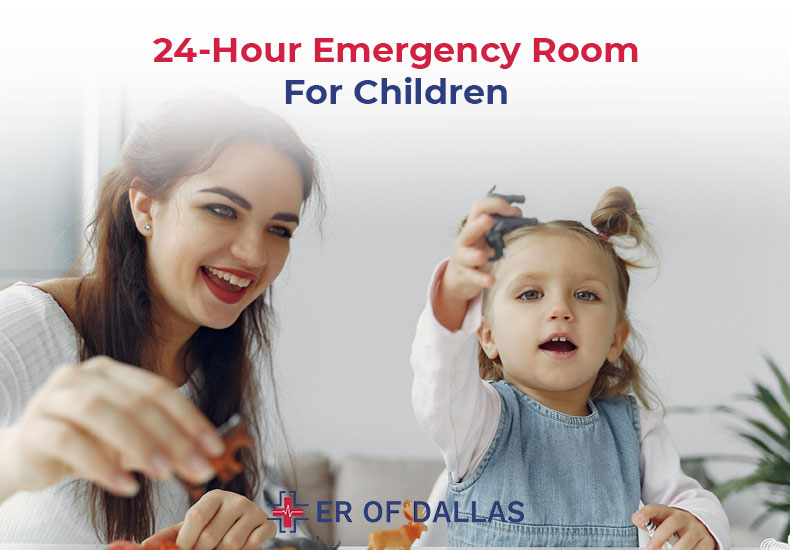
Parents must have access to pediatric emergency rooms that are open 24/7 and can handle even the smallest patients since medical crises can occur at any time. When children are injured or ill, getting a diagnosis and receiving treatment might be critical on time.
Moms and Dads can take advantage of the 24-hour pediatric emergency care at the children emergency room Dallas instead of waiting to schedule an appointment with a physician or treating the injury or illness at home.

